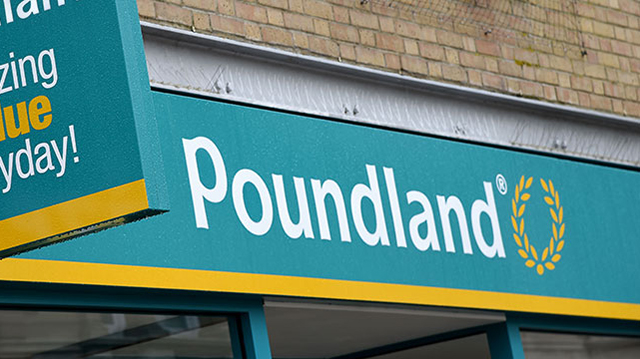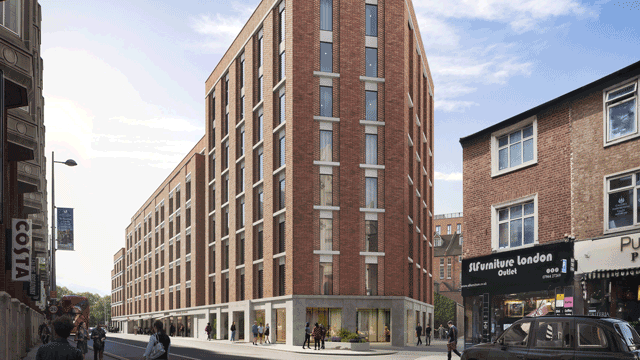A new division is hard at work in the Treasury. Set up in May, the business and indirect tax unit, led by Edward Troup, formerly of law firm Simmons & Simmons, is gearing up for a bold political move by chancellor Gordon Brown: the reintroduction of the betterment levy. The idea is not new. The first incarnation of the levy on raised land values was introduced by the then chancellor David Lloyd George in 1909, and caused uproar. A year later, Estates Gazette launched the Land Union Journal (left), spurred by “the fierce conflict that is being waged over the land taxes”.
Since that first land tax, there have been four subsequent efforts. All have ended in ignominy.
Weak link in the economy
Now Brown is threatening to introduce the tax for a sixth time. As well as the new policy unit, studies are being commissioned and high-profile members of the industry are being sounded-out by Treasury advisers. The trigger has been the review of housing affordability — viewed by the chancellor as the weak link in the UK economy — which was published by Bank of England economic adviser Kate Barker in December. In the report, Barker recommended a “planning gain supplement” — a tax to capture a slice of the windfall gains arising from the granting of planning permission.
Officials from the Treasury and the ODPM are drawing up proposals, and legislation is expected to be announced by November 2005, although there is no official timetable.
The tax, conceived as a means to assist the financing of affordable housing
and infrastructure projects, has raised serious concerns in the property industry. But policy-makers are convinced that the principle is sound.
The positive attitude is more than spin-deep, and even the policy’s most likely detractors approve of the Treasury’s intentions. “In principle, it seems absolutely fair and reasonable,” says Michael Chambers, head of policy at the RICS. But he adds a caveat. “It’s a question of the practicality. In the past, land taxes have always fallen down on the basis of their complexity,” he explains.
The point is amply demonstrated by the alarming statistic that, by the time it was finally abandoned in 1985, development land tax was costing the Treasury more to administer than it was bringing in.
The practical difficulties of valuing land and when exactly the chargeable event should occur dog the proposals. For example, would the tax be triggered when planning permission is granted or when land with planning permission is sold? While the former has its drawbacks by taxing an unrealised gain, the latter would do little to prevent the landbanking that Barker says she wants to deter.
But to many in the industry the predicted complexity is not the only worry. Francis Salway, chief executive of Land Securities, says: “A development land tax would be the most enormous deterrent to development and regeneration taking place.”
Until the Treasury makes its move, it is difficult to know what to expect, or to fear, from the tax. Some are encouraged by Barker’s recent comments that she is in fact proposing to make life easier rather than harder for developers by sweetening a land tax through the streamlining of section 106.
“It’s important to link the two because it makes no sense otherwise. The planning gain supplement contains elements that will prevent section 106 obligations becoming a blockage,” says Barker.
Lord Best, director of the Joseph Rowntree Foundation, who shepherded the Planning Act through the Lords, believes Barker aims to “simplify section 106 dramatically”. “At the moment, it’s a multi-headed monster which incorporates all the fiddly bits — from traffic roundabouts to playing fields for schools. She wants to standardise it and turn it into a two-headed monster which includes just the planning gain supplement and a requirement for affordable housing,” he says.
“The way Kate Barker has described it puts a different perspective on it. But the wording of the original report does refer to development land tax,” says Salway.
The confusion is understandable. With government deliberations at such an early stage, it is difficult to determine exactly what is being proposed and Whitehall sources say the government is far from making up its mind on exactly how the tax will work.
Confusion over intentions
The Planning Act is adding to the confusion by appearing to contradict Barker’s recommendations with proposals for a tariff system to phase out planning gain agreements. An amendment to allow tariffs to be introduced at a later date was added to the Act during its final stages in the House of Lords. The amendment, which caused consternation in the Lords and the industry, appeared to be in direct contradiction to the intentions of the review of circular 1/97, implying that the tariffs could come on top of the planning gain supplement.
On top of all this, policy suggestions are coming in from all directions about the mechanisms which could be related to the operation of the tax, for example public-private joint ventures with local authorities (see box). For now, the property industry is in limbo. It is not enjoying the certainties of a simplified section 106, as promised by Barker.
The clash between tariffs and the planning supplement isn’t just the spectre of double taxation. “It’s Brown takes on Prescott,” says former environment secretary John Gummer MP. “It’s a question of whether the Treasury gets to control the money, as with tariffs, or the local authority.”
Barker has gone some way towards answering this. In her evidence to the Environmental Audit Committee last week, she said: “Some [of the tax receipts] should rest with the local authorities that granted permission.” But she added that “part of the point is to give funds for infrastructure from central government to the regions”, implying that a percentage of funds would be centrally collected.
One thing is clear. Since April’s Budget, in which Brown endorsed Barker’s recommendations, the ODPM has backed down on its own plans for changing section 106s, referring to the proposed alterations as an “interim phase”. With rumours of a consultation on the betterment levy in the autumn, the Treasury is in the driving seat and Barker’s proposals are the road map.
Brown said: “While the business rate sets a tax on developed properties, the Barker report states that there is none on the unearned increment in land values when undeveloped land is granted planning consent.”
The simplification of section 106 is backed by John Stewart, director of economic affairs at the House Builders Federation, but he says that taxing the uplift in land values is fine “as long as the level of tax is low enough not to deter landowners from selling”.
Hope for a simpler system
David Camp, chief executive of Stanhope, voices the industry’s acceptance of the tax, so long as it adheres to Barker’s intentions. “Some form of levy that can add clarity and channel money into infrastructure is clearly a good idea, provided it is not penal. But there will always be a temptation for any chancellor to use it to fill the Treasury coffers.
“That was the problem with the development land tax. A repeat of past mistakes would be a disaster.”
|
|
|
In the last century alone there were five major attempts to tax the increase in land value resulting from development. |
|
1909 The first attempt by government to introduce a land tax by chancellor Lloyd George. The imposition of increment value duty — a 20% duty chargeable on the difference between the value of land at the date of legislation and the date it was sold — caused uproar. Abandoned by 1920. |
|
1932 The Town and Country Planning Act gave local authorities the power to collect up to 75% of the increase in land values brought about by re-zoning land for building, but by 1940 planners concluded that the “betterment levy” was not effective. |
|
1947 Labour introduces the first of its three failed post-war attempts in the shape of the development charge introduced in the 1947 Town and Country Planning Act. Abandoned by the Conservatives in 1952. |
|
1967 Harold Wilson introduces a betterment levy set at 40% of profit, but in 1970 Edward Heath kills it off. |
|
1976 Development land tax reintroduced, set at 80% of the increase in land value. The Thatcher government keeps it, at the reduced rate of 60%. |
|
1985 to present Nigel Lawson abandons DLT, and the opaque practice of “planning gain” starts to evolve, including individual site by site negotiations. In December 2003, Barker makes her recommendations for a planning gain supplement. |
|
|
|
Phil Butler, head of commercial consultancy at AWG, is pioneering a public-private funding mechanism to fund infrastructure from the uplift in land values in advance of development. He believes it could achieve similar results to the proposed planning gain supplement. |
|
The model, which arose from discussions with Catalyst Corby, Corby’s urban regeneration company, on how it would deliver infrastructure is based on a joint venture between the public sector — normally the local authority — and all the local landowners involved. Shareholding in the company, which would be set up as a limited liability partnership, would be based on the landowning of the partners, which may include the local authority. Alternatively, the local authority could put in additional equity. |
|
The partnership then commissions an “infraco”, short for infrastructure management company, which would be a public interest company. “It would be not for profit, not for dividend, though it can make money which it ploughs back into the community,” says Butler. |
|
The infraco is charged with financing and implementing all the necessary infrastructure according to the masterplan. Once the infrastructure is in place, parcels of land would be sold to developers at increased value. The income would then be distributed to ensure fair returns for landowners, while the remainder would go towards supporting the infraco. |










